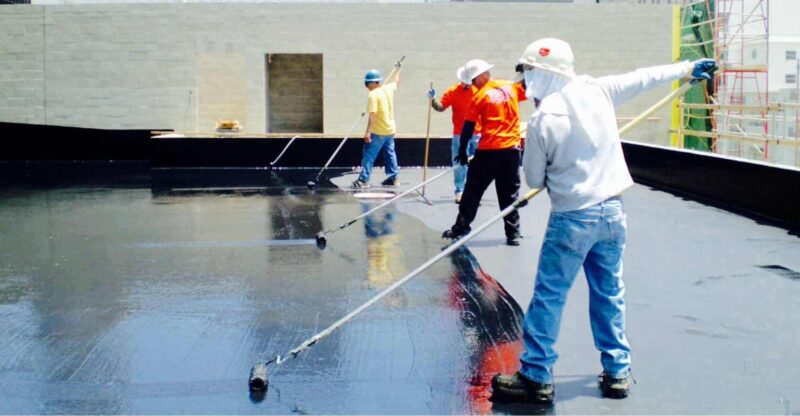Home is a special place to dwell, where you feel loved, appreciated, and remain safe. Decorating your newly built home with colors of your choice is an art. But just painting your home alone is enough for an extended-lasting property? Many people think that waterproofing is an unnecessary expense and a waste of time. But what will happen if we paint the house without waterproofing? At least you will notice one or more of these problems over some time.
They are,
- a) Interior damage to the building like wet patches on the walls, leaky roofs, rotten wooden doors, windows, etc.,
- b) Onset of health problems like mold allergies and asthma.
- c) slow deterioration of the building structure and foundation
- d) Increases the repair cost and
- e) Reduces home value.
The exterior of the home is exposed to natural damages like rain, strong winds, the sun’s UV rays, and moisture from the atmosphere. The water seeps slowly inside the house and affects the areas like walls, roof, bathroom, basement, kitchen, sink areas, window frames, switches, and many more. You may observe dampness on walls, mold growth, cracks, gaps, flags, peeling/bulging of painted walls, or seepage from the exterior adjoining walls and ceilings causing severe damage. It’s always better to waterproof the house before monsoon season to escape from the water damages. The steps to waterproof the home before painting are,
- Checking the walls for cracks and sealing them: Inspect the house for any damages, water leakages, or condensation within the walls and fix it.
- Cleaning your gutters twice a year: It is important because if it is clogged, the water runs through the edges and down the walls. Also, the rainwater gets retained in the roof damaging the wood, interior walls and causes allergies due to mold growth
- Caulking the key areas: Using quality caulking around the window frames, underneath the sinks and kitchen counter, shower and bathtub helps to seal the key areas that may be prone to water leakage in the future.
- Selecting the right waterproofing material: Like concrete waterproof Coating ( cement-like product ) that adheres to any surface even painted walls, silicon-based concrete sealer that can be used only on unsealed / unpainted walls and the waterproofing paint made of acrylic, is specially designed that allow the walls to breathe, eliminates moisture and adhere to any painted surfaces as well.
- Plaster waterproofing additive: Adding plaster to the waterproofing compound, helps to prevent water infiltration and reoccurrence. So most of the exterior walls are treated with applications that improve the aesthetics and protect from moisture.
- Preparing your walls for waterproofing: means, first using a good quality filler, fix the cracks and patch holes, then after it is dried, clean the surface with a wire brush and water. Let the walls dry entirely for good adhesion between the body and the waterproofing compound.
- Applying the waterproofer: waterproofing the home is best at the time of construction by using high-quality waterproofing liquid with sand and cement. However, before painting walls or re-painting, it is good to use two coats of waterproofing putty with high-quality undercoatings like silicon and emulsion additive to make sure you used enough product to form an impenetrable barrier. After waterproofing the surface, it becomes resistant to water, alkali, and salt. Then coat the surface with a layer of primer and two coats of
- Conducting a water tightness test by spraying the water on the impervious surface for 2 hours at a 30-degree angle. The home will pass the test if the moisture meter shows that there is no moisture. This test is very important for waterproofing exterior walls.
- Conducting water tightening process: This is a proven method conducted in waterproofing Bangalore which gives a permanent solution to the wall dampness and ceiling leakage.
By waterproofing your home before painting, you can not only safeguard it from severe damages but also boost the value of your home and creates a healthy living. To know more about the related topics like.

